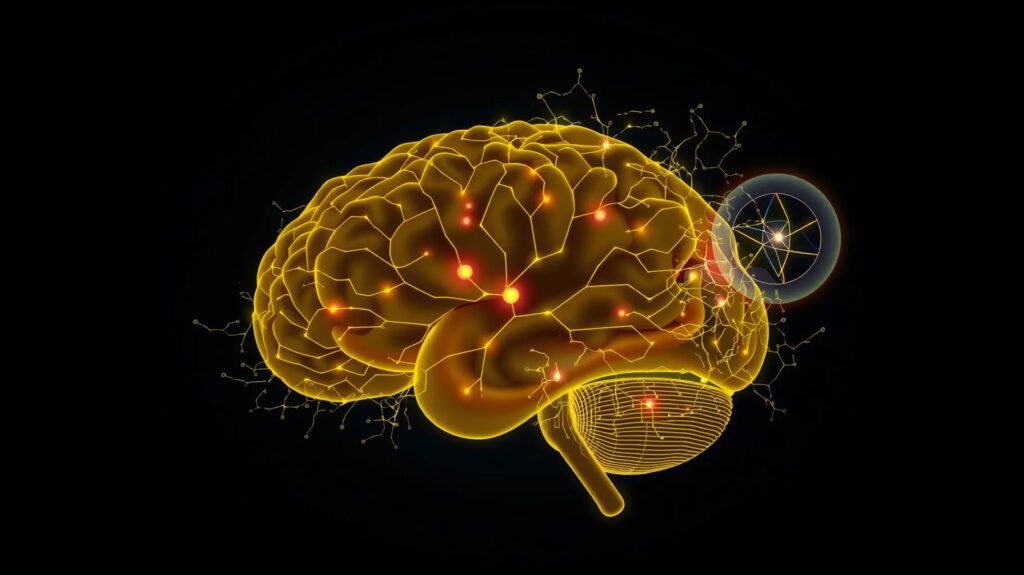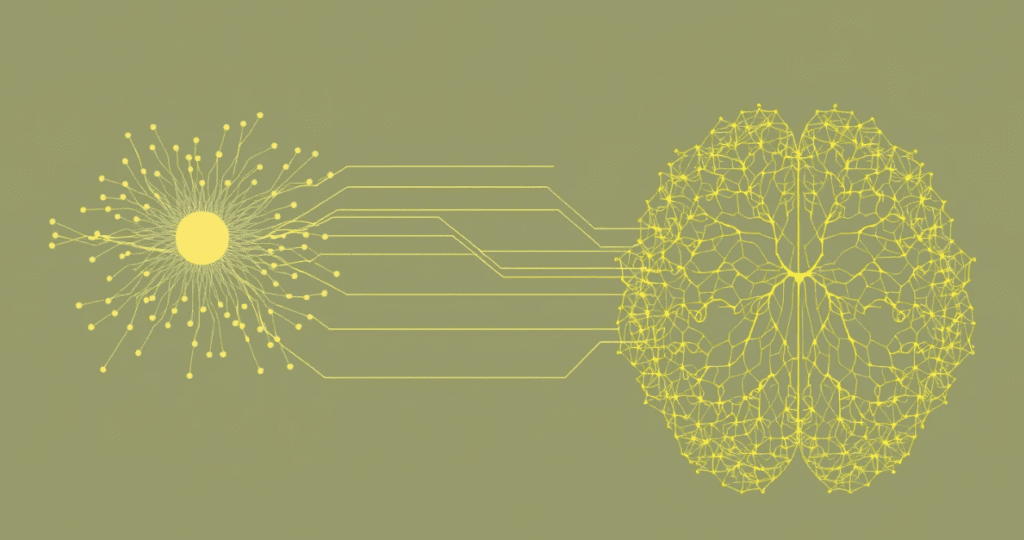
Many deep learning models, struggle to fully understand how these systems arrive at their decisions. This is where neural-symbolic integration steps in.
Promising a solution by combining two seemingly different approaches: logic-based reasoning and neural networks.
By merging symbolic reasoning (which focuses on clear, structured logic) with the adaptive learning of neural networks, scientists are creating AI systems that are both intelligent and explainable. This hybrid model not only improves decision-making but also ensures the systems are more transparent.
The key question remains: Why is it so crucial to bring logic and learning together?
The Role of Logic in AI
Logic has long been the backbone of traditional AI systems. Whether solving complex problems or making deductions, logic-based AI relies on clear rules and well-defined structures to reach conclusions. This makes these systems highly reliable in areas like law, mathematics, and scientific reasoning.
However, despite its precision, purely logical systems have limitations. They can’t easily adapt to new data or learn from experience, which is why integrating them with machine learning techniques opens a new realm of possibilities.
Neural Networks: The Learning Side
On the other hand, neural networks are brilliant at learning patterns from vast datasets. They’re inspired by the way the human brain works, allowing AI systems to adapt, recognize speech, interpret images, and even translate languages.
Yet, there’s a downside. These systems often operate like black boxes—capable of impressive feats, but without the ability to explain how they arrived at a decision. This lack of transparency is a significant concern, especially when AI is applied in sensitive areas like medicine or criminal justice.
Bridging the Gap Between Understanding and Flexibility
Neural-symbolic integration seeks to combine the strengths of these two approaches. While neural networks offer flexibility and the ability to learn from unstructured data, symbolic reasoning provides a structured, interpretable framework. By integrating the two, AI systems can not only make powerful decisions but also explain the reasoning behind those decisions.

Enhancing Decision-Making in Critical Domains
One of the most promising applications of neural-symbolic AI is in areas where both precision and transparency are essential. Take healthcare, for example. Doctors rely on AI systems to help them diagnose patients, but they need to trust and understand how the system reaches its recommendations.
By using symbolic reasoning to explain the AI’s logic, doctors can confidently interpret the model’s suggestions and make informed choices. Similarly, in fields like financial analysis or legal reasoning, this hybrid approach offers an extra layer of clarity and accountability.
Tackling the Black Box Problem in AI
The black box problem is one of the most pressing challenges in modern AI. Many neural networks are excellent at performing complex tasks but can’t provide insight into how they arrived at specific outcomes. This is a major issue for industries where transparency is non-negotiable.
Through neural-symbolic systems, we can create AI that learns from data while still adhering to a structured, logical framework. This gives developers and users a deeper understanding of the AI’s decision-making process, fostering trust and reducing the risks of bias or errors.
Learning from Experience While Maintaining Structure
One of the exciting aspects of neural-symbolic integration is how it allows AI to combine learning from experience with the rigidity of structured logic. Purely logical systems struggle to adapt, while neural networks often lack the structure needed to ensure coherent reasoning.
In this integration, neural networks can adjust to new data, learning from it dynamically, while symbolic reasoning ensures that the decision-making process follows clear and understandable rules.
Improving AI’s Accountability and Ethical Standards
With more AI systems being deployed in socially sensitive contexts, accountability has become a hot topic. Biases in AI can lead to harmful consequences, especially when the system’s reasoning is unclear. Here’s where the transparency of symbolic systems can shine.
By embedding logical frameworks into AI models, we not only improve their ethical standards but also ensure that developers can track how decisions are made. This added accountability can help mitigate the risks of unintentional biases in AI.
The Future of Hybrid AI Systems
Looking forward, the blend of symbolic reasoning and neural learning seems to be where AI is headed. Researchers are constantly exploring new ways to deepen this integration, aiming for AI that is intelligent, flexible, and transparent.
From autonomous driving to smart cities, this hybrid approach could soon transform how we trust and rely on machines in daily life.

Overcoming Challenges in Neural-Symbolic Integration
While neural-symbolic integration offers a powerful solution, it isn’t without its challenges. One of the main hurdles is aligning the complex structures of symbolic logic with the often less-structured nature of neural networks. These two systems operate differently: symbolic logic demands clear, rigid rules, while neural networks thrive on flexibility and learning from unstructured data.
Another challenge lies in scalability. Neural networks can handle enormous datasets, but integrating symbolic reasoning into these models often requires additional computational power. However, as AI technology advances, researchers are developing more efficient methods to bridge this gap, making hybrid AI systems more practical for real-world applications.
Real-World Applications of Neural-Symbolic AI
Neural-symbolic systems are already making an impact in several industries. In healthcare, they can enhance diagnostic systems by providing explanations for their predictions, helping doctors make informed decisions. In autonomous vehicles, this technology could improve decision-making processes, offering transparency in life-and-death situations.
Another promising area is natural language processing (NLP), where neural-symbolic AI is helping machines understand not just the data but the meaning behind human language. This ability to grasp context and reason logically could revolutionize AI-powered assistants and chatbots.
Building Trust in AI Systems
For AI to be truly embraced in critical fields, trust is essential. Neural-symbolic integration can help build this trust by making AI systems more transparent and accountable. By clearly explaining how decisions are made, these systems can ensure that users—whether they’re doctors, lawyers, or everyday consumers—have confidence in the AI’s recommendations.
The explainability that comes with symbolic reasoning not only increases trust but also opens up AI to broader applications, including government, finance, and ethics-driven sectors, where transparency is critical.
The Path Forward for Neural-Symbolic Integration
As researchers continue to explore and refine the neural-symbolic approach, the possibilities for AI innovation seem endless. The fusion of learning and logic offers a path to building stronger, more transparent AI systems that can revolutionize industries, enhance decision-making, and create more trustworthy, ethical models.
It’s clear that as the AI field matures, neural-symbolic integration will be central to the development of the next generation of smart machines—machines that can not only learn but also reason, explain, and make decisions in ways that are both flexible and logical.
As AI technology continues to evolve, the importance of integrating neural networks with symbolic reasoning will grow, pushing the boundaries of what AI can achieve in fields that demand both intelligence and explainability.
FAQs
Why is neural-symbolic integration important?
It addresses one of the biggest challenges in modern AI—the black box problem—where neural networks can make powerful decisions but can’t explain their reasoning. By integrating symbolic logic, AI systems can offer transparency, accountability, and more reliable decision-making.
How does neural-symbolic integration improve AI transparency?
Neural-symbolic AI can explain its decisions by combining logical rules with the learning capabilities of neural networks. This makes it easier for humans to understand how the AI reached a conclusion, which is especially important in sensitive fields like healthcare or criminal justice.
What are the key benefits of neural-symbolic systems?
These systems offer the flexibility of neural networks while maintaining the precision and transparency of symbolic logic. This combination leads to AI that can learn from data but also provide clear explanations for its decisions, improving trust and accountability.
What challenges does neural-symbolic integration face?
One major challenge is aligning the unstructured nature of neural networks with the rigid structure of symbolic logic. Another issue is scalability—integrating these two approaches can require more computational resources than traditional AI models.
Where is neural-symbolic AI used today?
Neural-symbolic systems are being used in areas like healthcare, finance, and autonomous driving, where both accuracy and explainability are critical. These systems are also applied in natural language processing (NLP), helping machines understand and reason with human language.
How does neural-symbolic AI address bias?
By embedding logical frameworks into AI, neural-symbolic systems can make decisions that are more transparent and traceable. This helps mitigate bias, as users can clearly see how decisions are made and identify potential sources of bias more easily.
Can neural-symbolic integration improve decision-making?
Yes. Neural-symbolic integration combines the pattern recognition abilities of neural networks with the clarity and reasoning of symbolic systems. This leads to more accurate, justifiable decisions, especially in fields requiring high levels of trust and precision.
What industries benefit the most from neural-symbolic integration?
Industries such as healthcare, finance, law, and autonomous vehicles greatly benefit from neural-symbolic systems due to their need for both powerful learning models and clear, logical decision explanations. These fields rely on AI that can be trusted and understood.
What’s the future of neural-symbolic integration?
As AI technology advances, neural-symbolic systems will likely become more efficient and scalable, finding broader applications in smart cities, robotics, and AI ethics. The ongoing research is focused on deepening the integration between learning and logic to create more versatile and transparent AI systems.
Does neural-symbolic integration make AI more ethical?
Yes. By offering explainability and transparency, neural-symbolic AI helps create systems that are more accountable and ethical. Developers can better track decision-making processes, reducing the risk of bias and increasing trust in AI-driven solutions.
How does neural-symbolic integration enhance AI’s learning ability?
Neural-symbolic integration enhances learning by allowing AI to adapt through neural networks while retaining structured reasoning via symbolic logic. Neural networks can process vast amounts of unstructured data, learning patterns, and making predictions, while the symbolic aspect ensures that these decisions follow logical and interpretable rules. This makes the AI’s learning process more guided and reliable.
Can neural-symbolic AI systems handle large datasets?
Yes, neural-symbolic systems can handle large datasets, especially due to the strength of neural networks in processing and learning from vast amounts of unstructured data. However, integrating this with symbolic logic can sometimes demand more computational power, so optimizing scalability is still an ongoing challenge in this field.
How does neural-symbolic integration solve the black box problem in AI?
Neural-symbolic AI tackles the black box problem by blending explainable symbolic reasoning with the flexible learning ability of neural networks. This allows the AI to provide a clear logic trail for its decisions, making the decision-making process more transparent and understandable for users, unlike traditional neural networks that often lack interpretability.
How does neural-symbolic integration impact natural language processing (NLP)?
In natural language processing (NLP), neural-symbolic systems help AI better understand context and reason logically about the meanings behind words and sentences. This combination allows machines to grasp the nuances of language, which is crucial for applications like translation, chatbots, and speech recognition.
Is neural-symbolic integration widely adopted?
While neural-symbolic integration shows immense promise, it’s still in the development and research phase in many areas. It’s already making strides in fields like healthcare, legal systems, and NLP, but broader adoption will likely come as computational efficiency improves and more practical applications emerge.
What role does neural-symbolic integration play in AI ethics?
Neural-symbolic integration contributes significantly to AI ethics by offering transparent decision-making and accountability. By embedding logical rules into AI systems, neural-symbolic integration ensures that decisions can be explained and traced, which is essential for reducing bias and ensuring fairness in critical sectors like law and healthcare.
How does neural-symbolic AI improve human-AI collaboration?
Neural-symbolic AI can make collaboration between humans and AI more seamless by allowing AI systems to explain their reasoning in human-understandable terms. This enhances trust and makes it easier for humans to work alongside AI in complex decision-making processes, like in medical diagnoses or legal interpretations.
Can neural-symbolic systems learn new concepts over time?
Yes, one of the key strengths of neural-symbolic AI is its ability to learn new concepts over time using the neural network’s ability to process and adapt to new data. Meanwhile, the symbolic side ensures that the new knowledge is structured in a logical and interpretable manner. This means that these systems can both learn and evolve while maintaining clarity in their decision-making processes.
What are some real-world examples of neural-symbolic integration?
Real-world examples of neural-symbolic integration include AI healthcare tools that help doctors by offering explainable diagnoses, autonomous vehicles where safety decisions are logically structured, and financial systems that balance predictive analytics with clear, understandable risk models. These applications benefit from the combination of data-driven insights and transparent reasoning.
How is neural-symbolic AI advancing autonomous systems?
In autonomous systems like self-driving cars, neural-symbolic AI helps improve both decision-making and explainability. While neural networks allow the system to learn from real-world data, symbolic reasoning helps create logical frameworks for critical safety decisions, making these systems more reliable and trustworthy.
What are the key differences between neural-symbolic AI and traditional AI?
Traditional AI, especially deep learning, focuses on pattern recognition through data, but it often lacks explainability and logical structure. In contrast, neural-symbolic AI combines learning from data with structured reasoning, offering both the flexibility of neural networks and the clarity of symbolic logic. This makes neural-symbolic AI more transparent and trustworthy for critical applications.
How does neural-symbolic integration influence AI’s future?
Neural-symbolic integration is shaping the future of AI by creating systems that are smarter and more accountable. By merging deep learning with logical reasoning, AI can handle more complex tasks, improve explainability, and operate in high-stakes fields like healthcare, law, and autonomous technology. As this technology matures, it will likely become a key component in building ethical, transparent AI systems across various industries.
Resources
- “Combining Symbolic and Neural Learning for Explainable AI” (Research Paper)
This paper delves into the importance of combining symbolic reasoning with neural networks to create explainable AI systems.
Read the paper here - “The Road to Explainable AI: Neural-Symbolic Integration” by Frans Coenen
An insightful article explaining the significance of explainability in AI and how neural-symbolic systems can solve the black box problem.
Research Groups and Websites:
- The Neural-Symbolic Learning and Reasoning Group
A research group at King’s College London, exploring various applications of neural-symbolic AI in cognitive computing and machine learning.
Visit their website - Stanford University AI Lab
Stanford’s AI lab is a leader in AI research, and they regularly publish papers and host events focused on neural-symbolic integration and explainable AI.
Explore Stanford AI Lab
Podcasts:
- “AI Alignment and Neural-Symbolic Approaches” – AI Alignment Podcast
A podcast that discusses the importance of neural-symbolic systems for ethical AI and the role they play in the future of artificial intelligence. - “Exploring Explainable AI and the Power of Neural-Symbolic Systems” – Data Skeptic Podcast
This episode dives into how neural-symbolic AI systems enhance accountability and improve decision-making in sensitive industries like healthcare and law.
Listen on Data Skeptic